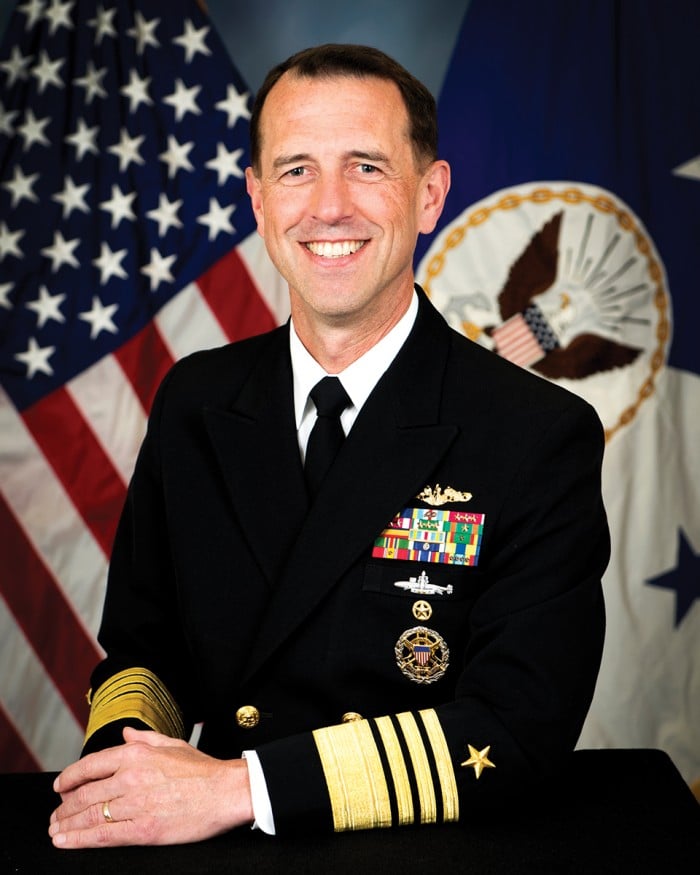Admiral John Richardson, SM ’89, EE ’89, ENG ’89
Last September, Admiral John M. Richardson became the most senior naval officer in the U.S. And now the four-star admiral, who studied underwater signal processing at MIT, serves on the Joint Chiefs of Staff as chief of naval operations (CNO).

After Richardson graduated from the United States Naval Academy in Annapolis in 1982, he spent four years on a submarine home-ported in California. Then he earned three degrees at the MIT/Woods Hole Oceanographic Institute Joint Program in oceanography/applied ocean science and engineering. “As a submariner, there was an awful lot I could do directly with the knowledge I gained,” he says.
Rising through the ranks, Richardson commanded a sub—the USS Honolulu in Pearl Harbor—and then a squadron of subs before heading the Submarine Allied Naval Forces South. He then served in Naples, Italy, as chief of staff for U.S. Naval Forces Europe and U.S. Naval Forces Africa. He led the Navy’s nuclear propulsion program, a post previously held by Admiral Hyman Rickover, the longest-serving naval officer in U.S. history. “It was a real privilege to have that job,” Richardson says. “There was a culture of not only moving technology forward, but [doing so] in a way that’s responsible and safe and delivers unmatched capabilities.”
As CNO, Richardson is now the principal naval advisor to the president of the United States. In that role, he regularly taps MIT/WHOI faculty and alumni in academia and the private sector. “I continue to collaborate with them. It’s a terrific community to be a part of,” he says. Richardson also holds a master’s degree in national security strategy from the National War College.
Richardson sees the next 25 years as a critical time for the Navy. “The primary challenge in the Navy right now is to keep up with the pace of new ideas—whether those ideas are technological ideas or just new ways of doing business,” he says. Worldwide, more than 90 percent of goods travel by sea, he notes, so the Navy’s role is vital for national security and the global economy.
“The thing that’s as challenging as any technology is making sure we attract and retain our people,” he says. “The new generation is much more tech savvy. We have to change our processes to accommodate not only the tools but also the people who are going to use them to protect America’s interests around the world.”
Richardson and his wife, Dana, who was his high school sweetheart in York Harbor, Maine, have five children. The family has moved 21 times throughout Richardson’s service, with his Tech Review subscription in hot pursuit. They now reside in Washington, D.C.
Keep Reading
Most Popular
Large language models can do jaw-dropping things. But nobody knows exactly why.
And that's a problem. Figuring it out is one of the biggest scientific puzzles of our time and a crucial step towards controlling more powerful future models.
The problem with plug-in hybrids? Their drivers.
Plug-in hybrids are often sold as a transition to EVs, but new data from Europe shows we’re still underestimating the emissions they produce.
Google DeepMind’s new generative model makes Super Mario–like games from scratch
Genie learns how to control games by watching hours and hours of video. It could help train next-gen robots too.
How scientists traced a mysterious covid case back to six toilets
When wastewater surveillance turns into a hunt for a single infected individual, the ethics get tricky.
Stay connected
Get the latest updates from
MIT Technology Review
Discover special offers, top stories, upcoming events, and more.